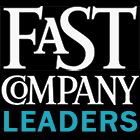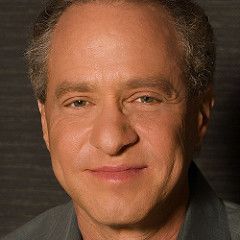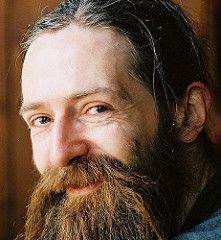Originally posted at Fast Company.
Yesterday I gave a talk at the Snoqualmie Valley School District Foundation fundraising luncheon. My role was to help them envision the future of education. Some of the comments I made yesterday will be relevant to the scenarios we build on this blog. As an avid anti-futurist, I said I didn’t know what education would look like, but that I was tracking how many of its attributes might play out.
That said, there are some things I feel very strongly about, regardless of the future. These are considered robust implications in a scenario planning exercise. I will discuss a few of those, and then discuss some of the uncertainties.
Learning How to Learn With technology evolving at an exponential rate, and with it the rise of new industries; and with ever more of the planet’s human population bumping into each other in cyberspace, if not directly connecting to one another through social media, the ability to learn new things will be important. Successful people will learn this regardless of their formal education experience, but there will be tremendous missed opportunity if we don’t use the 19-years of education afforded most students (yes, less in developing countries, but increasing) to teach students how to learn, and through that, how to accept and embrace change.
Horizon Scanning and Scenario Planning It may seem a bit self-serving to say that scenario planning is a robust implication for education, but if we accept that the future is uncertain and that we need to embrace change, then teaching people how to use techniques for navigating that change by anticipating possible outcomes is an important skill and mindset. If we continue to teach history as a series of dates and timelines rather than contingencies–if we only teach writing as linear narratives that start with outlining–and if we confiscate cell phones rather than helping learners understand the risks and leverage the opportunities–then we teach a future of constraint rather than a future of possibility. One of my comments yesterday followed a geocaching GPS presentation. The GPS systems were procured through a local grant. I said that in the future, we wouldn’t need the grant because we would ask the students to just use their phones rather than confiscate them.
Transliteracy People will need to know how to effectively communicate in various media. Today it is e-mail, text, Twitter, Facebook and YouTube. With apps like FourSquare andColor, location is becoming a component of communication. How does location change the way we write and communicate? Who knows what channels will become popular tomorrow. What we do know is that people should learn how to effectively and safely transverse these channels, and ideally, add value–and garner value–when they participate./p>
Culture Awareness and Sensitivity With so much work becoming non-local, people will need to understand how to communicate and work with those from other parts of the world. Start this early. The new Avenues school experiment attempts to transforms schools from local entities into global institutions. Some futures suggest that globalization could fracture under the influence of strong nationalism or based on natural disasters, like a global epidemic or massive solar storm. This implication for education, however, is not irrelevant even in that future, as a disruption in globalization would not result in the immediate repatriation of foreign national or immigrants from their current places of residence. In other words, there is little downside to investing in cultural awareness and sensitivity, and plenty of utility in it, no matter which future unfolds.
Dropping the Industrial Age Framework This is perhaps the most controversial of the robust implications, and one that appears here and on the list of uncertainties (asMeasurement Approach below). We think of schools as factories and tests scores as key performance indicators. Current approaches to testing do not serve learning. Some educators take large chunks of their year to “teach to the test.” Some school districts, when faced with enormous post-Great Recession budget pressures, choose to invest mainly in programs that drive better standardized tests results. The rewards structure of public and private funding reinforces this industrial age mentality. This appears justified when studies, such as the one conducted by Kuncel and Nezlett (Standardized Tests Predict Graduate Student’s Success,) suggest that standardized admissions test are valid predictors of “valid predictors of many aspects of student success across academic and applied fields.” If we take a factory view of education, then we should be able to see that the elimination of variability and the use of standard approaches to problem solving would result in better performance because the people entering the institution were pre-selected to conform to the institution’s learning approach. You can’t make rubber balls in a ball bearing factory any more than you can make radical inventors in an institution dedicated to cookie cutter MBAs. In the Kuncel and Nezlett study they recognize that many of the soft skills, including networking, professionalism, leadership and administrative performance were not captured–or good graduate student may not make a great leader.
If we strip away the industrial age patina and replace it with a knowledge economy approach, we might find a more holistic framework for measuring the performance of institutions, educators and learners. The problem is, that nations (see OECD Education Rankings) continue to be so focused on industrial age reinforcement (like rewarding improvements in standard test results) that they have not pursued the creation of an economic framework that understands performance against a knowledge economy, perhaps even sustainable knowledge economy, backdrop.
Thus the robust implication is that we must break free of the industrial age framework in order to see other possible ways to measure the success of learning. This may lead not only to new education measurement frameworks, but to new perspectives on innovation as well.
Uncertainties
Jobs and Skills Many people talking about the future toss out a phrase like “70% of tomorrow’s jobs haven’t been invented yet.” Interesting observation, but not very helpful. I personally conduct research that looks at scientific discoveries and business issues that hint at future commercial implications and then imagine the kinds of jobs those potentially burgeoning industries might require. Consider the following: computation artist, authenticity engineer, neuromapping specialist, geriatric medial retrainer or quarantine enforcer. Many of these jobs are combinations of computer science and something else. A computational artist would need to know how to create works with lasting aesthetic value while writing code. The neuromapping specialist would create models of human synapses, eventually leading to brain implants that mimic parts of the brain in ways that artificial hearts mimic muscles. An authenticity engineer would be a social media-social scientist, ensuring that one-to-one marketing appears authentic even when the “one” on the receiving side of the equation is really a profile of “one” and not a real individual. Uncertainty in skills is an important driver to the “learning how to learn” implication above: if we don’t know what the future looks like, the best thing we can do is learn how to learn.
Curiosity Will we end up with a world where people are so thirsty for knowledge, and knowledge so accessible, that education becomes a way to guide children through self-directed learning as they relish and wallow in the immensity of knowledge? Will educators help learners become well-rounded explorers, using the Internet, telecommunications and travel as the means to enhance their far reaching curiosity? Will this exploration led to the discovery of personal passions that help people frame, and perhaps momentary focus their attention, to solve a particular problem, and having solved that, move on to something else that interests them?
Or will people find so much information on their own passion or fetish that curiously about that single topic consumes them? Will they be so focused that they lose peripheral vision, so specialized what they find interesting that learners becomes functionally illiterate outside of their specializations, be it tennis or manga?
Measurement Approach Will standardized tests for language and mathematics prevail as the way to determine success? Will the influx of models and analytics from the software industry create an even greater hold on standardization as sophisticated analytical outputs slice and dice even the most mundane actions of learners and educators? Or will sustainability influence learning, generating a “slow learning” movement that counteracts the overly structured technological approach with a more humanistic, pluralistic and unbound view of learning? Will a future evolve where learners, seeking fulfillment and happiness, determine their own measures of success by how well they can apply what they learned to their business and intellectual pursuits?
STEM Will the emphasis on science, technology, engineering and mathematics create a world filled with complacent conformers focused on success that was promised as one leg in an internationally competitive policy platform–or will the industrial and political powers witness a rebellion against rewarded career choices by refusing to accept that careers in art, literature, international affairs and others are second-class futures. Or, will inspired leaders find ways to inspire youth so that science and technology once again captures the imaginations of learners in the same way that the success of sports stars inspires young men and women to pursue careers in sports. Will science clubs return to challenge attendance at soccer games? Will the arts incorporate science and technology is a way that doesn’t demean, but rather celebrates the synergy? Will educators find ways to provide students with science and math competencies in ways that integrate with their motivations, rather than focusing on changing their motivation?
Class warfare Will the United States experience class warfare as economic disparities and access to technology create a deep divide, or will new economic models evolve that redistribute wealth more evenly, either through productivity increases that drive down price so disparities appear less meaningful, or political action that restructures tax and incentive systems? Will new industries over the coming decade emerge and “raise all boats,” perhaps displacing some apparently entrenched wealthy with new moguls, demonstrating the recycling nature of the global economy, fostering more hope, and providing more perspective, among the previously disenfranchised.
Conclusion
Uncertainties may unfold in any of the ways suggested above. The paragraphs above should not be considered exhaustive, but they should be considered proof that each topic is uncertain because it can end up in so many different places depending on the social, economic, technological and political context that ultimately governs our future. These exercises are meant to unshackle the assumptions readers make about these topics, help people plan for any future rather than the future they think will happen, or the future they are told will happen.
These are just a few of the uncertainties facing education. You can find a set of scenarios that incorporate these uncertainties, and others here. For this ongoing Fast Company exercise, the future of state of education will be one uncertainty among many. Later posts will explore other uncertainties, and eventually, how those uncertainties may interact with each other.
Follow @FastCoLeaders for all of our leadership news, expert bloggers, and book excerpts.


 The summer 2010 “
The summer 2010 “ Also speaking at the H+ Summit @ Harvard is
Also speaking at the H+ Summit @ Harvard is 